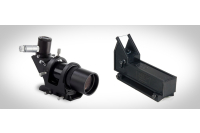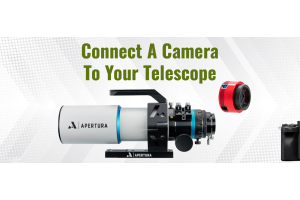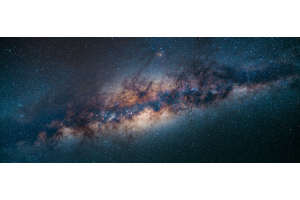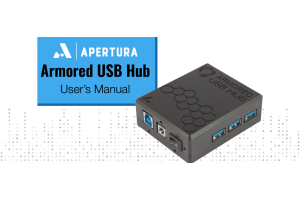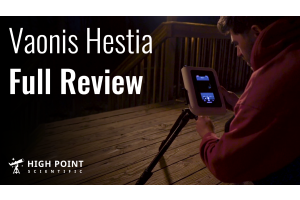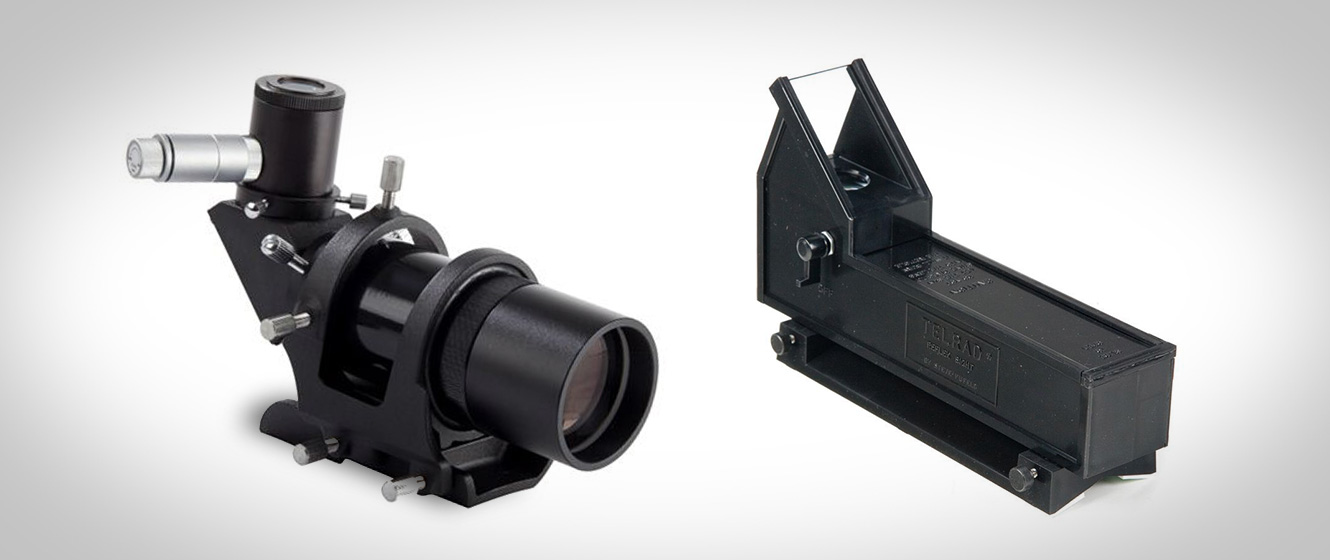
Compared to the naked eye, a telescope shows a very narrow field-of-view. That makes it a little difficult to aim and find a specific sky object. A lower magnification, wider field-of-view finder is one of the most beneficial telescope accessories for any telescope. Even when using computerized telescopes, a finder scope can still be very useful.
The way an astronomy finder scope works is simple. When the smaller finder scope is aligned with the main telescope, then centering the desired object in the finder should result in that object being mostly centered in the main scope’s field-of-view. Since the finder generally has a wider field-of-view, you should be able to navigate the sky fairly easily.
Types of Telescope Finder Scopes
There are two basic types of finderscopes. Finders that use optics to magnify an image, often called optical finders, are the first type, and they come in different configurations, including those that offer straight-through viewing, right-angle viewing, and image-correct viewing for terrestrial use.
The second type of telescope finder scope is typically called a Red Dot Finder or a Reflex Finder. They do not produce a magnified image, but rather, show you the sky as you would see it with your naked eye and point the way to the object of your choice with an illuminated red dot or concentric circles superimposed on a viewing screen.
Red Dot/Reflex Target Finder Scopes
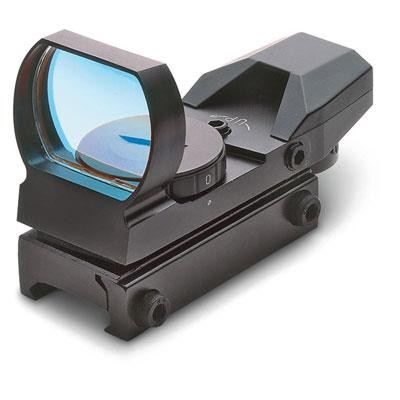
A simple red dot or reflex finder is not much different from a gunsight, made up of a crosshair or a dot inside a circle. Once this target finder scope is aligned with your telescope, you'll be able to observe objects through your telescope's eyepiece by simply placing the intersection point of the crosshairs or central dot as close to the center of the object as you can.
A red dot finder is preferred by many amateur astronomers because the illuminated reticle, crosshairs or simple red dot is easily seen in the dark and can be made brighter or dimmer whenever necessary. The pointer, powered by a red LED, appears superimposed on the night sky as we view through the finder.
Telescope finder scopes of this nature are generally very reasonably priced, inexpensive even. Most telescope red dot finders will have controls for adjusting the brightness of the LED and many have several different reticle patterns to choose from. They are also very easy to align with your telescope...a few minutes is all it takes.
Reflex or red dot finders are great for aiming non-motor driven Dobsonian telescopes. All you do is push and pull the tube while looking through the sight, then switch to the eyepiece of your reflector.
Magnifying Optical Telescope Finders
It’s all in the name, really. An optical finder is actually a small telescope. It will have less magnification and less light-gathering ability than the main telescope, but will also have a much wider field-of-view. Magnifications are most often in the 6X to 10X range.
The numbers used to describe an optical finder are the same as those used for binoculars. The first number is the magnification (usually somewhere between 6X and 10X) and the second number is the aperture (or diameter) of the optics. The bigger the aperture, the more your finder scope will see. The most common finder scope apertures are 50 mm, but you can buy smaller ones (30 mm) or bigger ones (60 mm or 80 mm).
A straight-through finder scope is a lot like the spy glasses that you see in old movies about pirates. You view straight through the optics, there is no mirror or prism to bend the light in another direction. This results in the image being both upsides down and reversed, which can be confusing to beginning astronomers. However strange this sounds, these finders work fine for viewing the night sky, but if you plan to use your telescope as a spotting scope during the day, a correct-image finder is recommended.
A right-angle finder scope has either a 45-degree reflecting mirror or a simple prism. This configuration is more convenient than straight-through viewing for two reasons: the image is no longer upside down (though it is still reversed), and it is easier to look through since the eyepiece is angled up towards the viewer.

Right-angle correct image finder scopes combine the better ergonomics of the right-angle finder with right-side-up, left-to-right correct images for a more natural viewing experience, but they are usually the most expensive option. These small telescopes, also known as “erect-image finders”, use an extra set of optics to correct the light path so that the image is right side up and non-reversed. As mentioned earlier, these telescope finders are the best choice if you plan to use your telescope as a terrestrial spotting scope.
Within these main types of scopes will be other differences and options. For instance, some finders do not allow the magnification to be changed while others have interchangeable eyepieces. This allows the user to raise or lower the magnification of their finder to suit their needs.
Another difference you may find when shopping for telescope finder scopes is the inclusion of a reticle in the eyepiece. Some include a simple crosshair while other reticles are more sophisticated. By the way, these reticle eyepieces often allow for illumination by either coming with an illuminator, or light source, or having a port in the side of the eyepiece to insert the one you purchase separately.
Types of Finder Scopes: Which is Right for You?
If you are a beginning amateur astronomer or on a limited budget, a red dot finder may be the best option for you. They are great finders for simple Dobsonian reflectors but work very well on all types of telescopes.
Larger aperture telescopes and anyone using very high magnification eyepieces will benefit from a right-angle finder scope because it’s easier to center the intended target and the right-angle eyepiece is easier to look through, especially when your telescope is pointed at objects high in the sky.
If you want to use your telescope for terrestrial use, or you just don’t like the idea of the Moon being upside down and image-reversed, then we recommend a right angle correct-image finder.
By the way, there is no rule that prevents you from using both types of finders simultaneously! Many amateur astronomers love the flexibility of finding an object with a reticle or red dot finder and then using their optical finder, with its added magnification, to zero in on their target.
If you’re not sure where to get started, please feel free to give us a call and our non-commissioned product advisors will guide you in the right direction. Contact us at 800-266-9590 or at [email protected].
This Article was Last Updated on 07/18/2023

